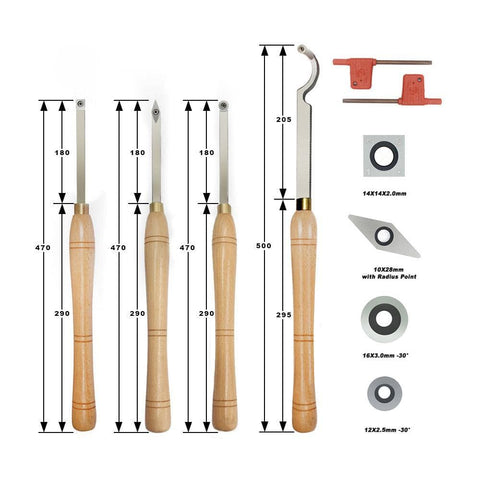Wood-turned bowls are a captivating blend of traditional craftsmanship and artistic expression, offering a unique and personal touch to any collection. The art of turning wood into beautiful, functional objects dates back thousands of years, with wood bowls being one of the most enduring creations of this craft. Today, wood-turned bowls remain a staple in both the practical and decorative realms, reflecting the skill of the artisan and the beauty of the natural wood from which they are made.
To create a wood-turned bowl, the process begins with selecting the right piece of wood. Different species of wood offer unique grain patterns, colors, and textures, each contributing its own character to the finished piece. Common choices include maple, walnut, cherry, and oak, although exotic woods like mahogany or rosewood are also used for their distinctive appearance. The wood is typically cut into a blank or rough shape and mounted onto the lathe. Using the lathe, the wood is spun while various tools are used to shape it, gradually forming the desired bowl shape.
What makes wood-turned bowls so special is the way the grain of the wood becomes part of the design. Each cut made by the turning tools reveals the natural patterns and swirls within the wood, creating a one-of-a-kind piece. The interaction between the shape of the bowl and the grain of the wood results in a dynamic, living texture that gives each bowl its individual charm. The grain direction, color variations, and knots present in the wood all play a significant role in how the bowl looks when finished, making every wood-turned bowl a work of art.
The turning process itself is a delicate and precise art form. A woodturner uses a variety of specialized tools, including gouges, scrapers, and chisels, to refine the shape and smooth out the surface. The lathe spins the wood, allowing the turner to work on it in a controlled manner, shaving thin layers of material with each pass of the tool. The skill of the turner lies in their ability to maintain a steady hand while adjusting the tool for the perfect curve, thickness, and smoothness of the bowl. Mastering the lathe takes years of practice, and even seasoned artisans continually refine their technique.
Once the bowl is turned, the process continues with sanding and finishing. Sanding is done meticulously to remove any tool marks or imperfections, giving the bowl a smooth surface that enhances the grain of the wood. After sanding, a finish is applied, typically a natural oil or wax, which not only protects the wood but also enhances its color and texture. The finish deepens the natural hues of the wood, making the grain patterns stand out and giving the bowl a polished, lustrous appearance. Some artisans may also use additional techniques, such as carving or texturing, to add extra visual interest to the surface of the bowl.
What makes wood-turned bowls so appealing is their combination of functionality and aesthetics. As utilitarian objects, they serve a wide range of purposes - from salad bowls and fruit bowls to decorative pieces and even functional serving dishes. The smooth, tactile quality of wood makes these bowls a pleasure to hold and use, while their organic, earthy appearance adds a touch of natural beauty to any table or display. In modern homes, wood-turned bowls offer a warm, rustic counterpoint to sleek, industrial designs, creating a harmonious balance between old-world craftsmanship and contemporary style.
For collectors and enthusiasts, wood-turned bowls are prized for their uniqueness and craftsmanship. No two bowls are exactly the same, even if they are made from the same type of wood. The individual skill of the turner, combined with the inherent characteristics of the wood, makes each bowl a one-of-a-kind treasure. Many woodturners sign their pieces, further cementing their identity as both creators and artists. Collecting wood-turned bowls allows enthusiasts to appreciate the richness of different wood types, the skill of the maker, and the artistry involved in transforming raw material into something both functional and beautiful.
Beyond their aesthetic value, wood-turned bowls have a deeper connection to nature. The use of sustainable, responsibly sourced wood ensures that artisans can continue to create these beautiful objects while being mindful of the environment. Many woodturners work with reclaimed or salvaged wood, giving new life to trees that might otherwise go unused. This sustainability is an integral part of the modern woodturning movement, where the focus is not only on creating beautiful, functional art but also on respecting and preserving the natural world.
In the end, wood-turned bowls represent more than just handcrafted objects; they embody a timeless tradition that continues to evolve with modern techniques while staying rooted in the natural beauty of the wood. Whether they are being used as part of a meal, displayed as decorative pieces, or treasured as works of art, wood-turned bowls connect the past with the present in a way few other objects can. The craft of turning wood into bowls is a living tradition, one that continues to captivate and inspire both creators and admirers alike.


